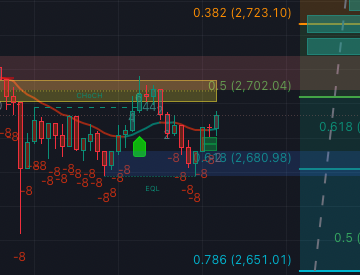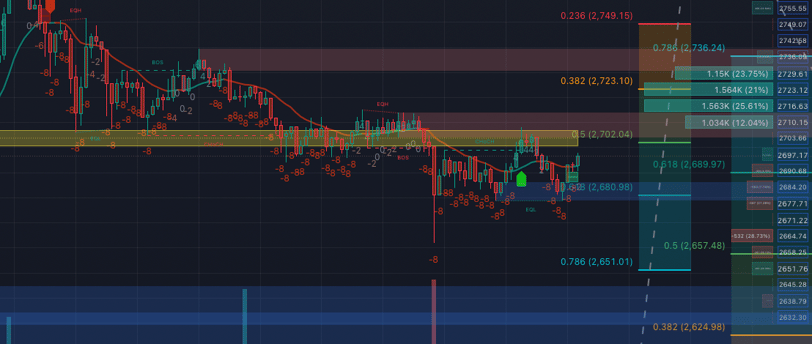Relationship between FVG (Fair Value Gap) and Magnetic Elasticity in Price Action
Brief description between FVG and Magnetic Elasticity.
QUANTITATIVE ANALYSIS
Ignacio Cordova Jr
2/15/20252 min read


This tiny green square under the candle is an indicator known as Fair Value Gap or FVG. An FVG is a price imbalance in the market where price moves too quickly in one direction, leaving a gap between the wicks of two candles. This usually happens when big institutions push the price rapidly, causing inefficient price action.
But, why is FVG important? Well, there is three main reasons why:
Price often returns to fill the gap before continuing its trend,
Traders use it as a support or resistance level to enter trades, and
It helps identify areas where big players might have left unfinished business.
Based on my experience as a technical analyst, I pay attention to the first reason, specially because the FVG share a similar analogy to the concept of magnetic elasticity on how price interacts with Fair Value Gaps (FVGs) in trading: it combines the pulling force (magnetism) and the rebounding effect (elasticity) seen in price action.
In simpler words, that means that when the green square is reached it will rebound back up to the red square (located under the red arrow) and it will repeat constantly.


For this to happen, the Magnetic Effect (Attraction to FGV) and Elasticity Effect (Rebound from FVG) must be understood in the following way:
Magnetic Effect (Attraction to FGVs)
Like a magnet, price is attracted back to an FVG when an imbalance occurs.
This happens because institutions (smart money) often revisit these areas to mitigate unfilled orders before continuing the trend.
The stronger the imbalance (wider FVG), the stronger the pullback.
Elasticity Effect (Rebound from FVGs)
Once price fills the FVG, it can rebound away like a stretched elastic band returning to its original position.
This happens when price taps into liquidity and resumes its original trend.
The rebound strength depends on factors like order flow, liquidity pools, and trend momentum.
Practical Example in Trading
Imagine price makes a strong bullish move, creating an FVG. Over time, price may retrace (like a magnet pulling it back). Once it reaches the FVG and fills the imbalance, it may snap back (elastic effect) and continue the uptrend.
If the FVG is in a strong uptrend → Price may use it as support and bounce up.
If the FVG is in a downtrend → Price may treat it as resistance and drop further.
Visual representation of Fair Value Gaps (FVGs) and Magnetic Elasticity:


Conclusion:
Fair Value Gaps (FVGs) act as price imbalances that exert a magnetic pull on price action, similar to how a magnet attracts metal. Once price reaches the FVG, an elastic effect often takes place, causing price to either rebound in the direction of the original trend or consolidate before a breakout.
By understanding the magnetic and elastic nature of FVGs, traders can anticipate market movements with greater accuracy, improving their entry and exit strategies.
Contact
services@cordovaquantitative.com
Copyright © Cordova-Reyes Consulting LLC or one of its affiliates.
All rights reserved.
Laredo, TX, 78045.
